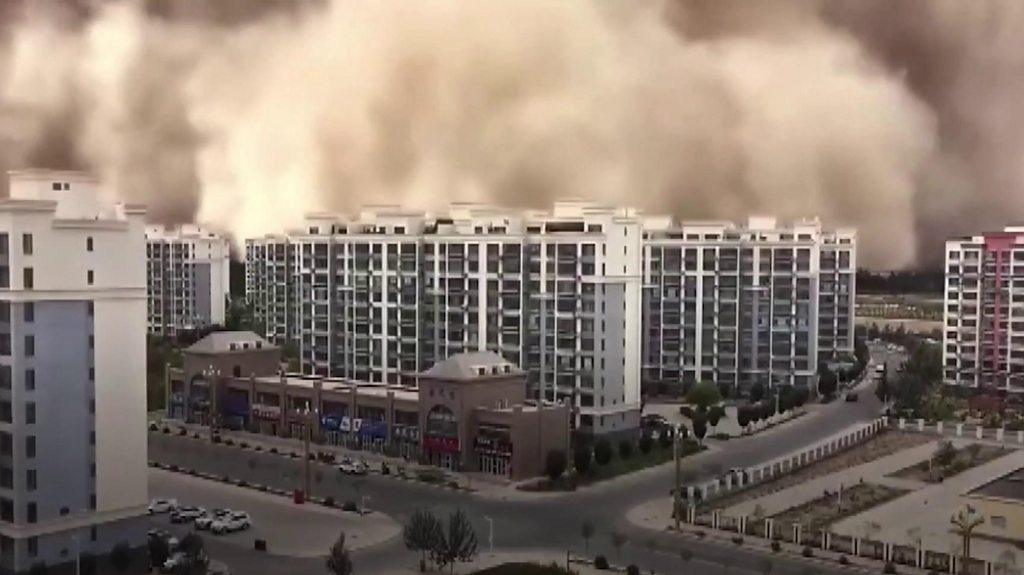Sandstorms bring air pollution concerns for Asian countries
- Published
- comments
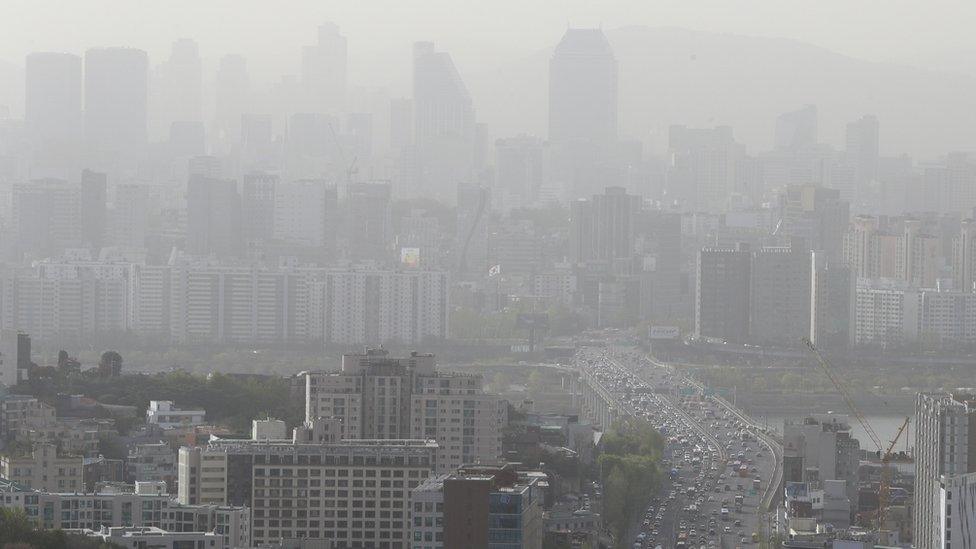
Seoul is shrouded in yellow dust from China on 12 April 2023.
Recent sandstorms have brought a thick covering of yellow dust to cities from China to South Korea.
Yellow dust is a seasonal problem for millions in North Asia, but this year the dust has been able to spread even further east to Japan.
The dust comes as a result of sandstorms in the Gobi desert that borders China and Mongolia, with the resulting dust catching on springtime winds to reach other countries.
But Chinese authorities have said that sandstorms in the region have been happening more and more often since the 1960s, due to rising temperatures and low in levels of rain the Gobi wilderness.

The sandstorms originate from the Gobi desert that borders China and Mongolia
Many European countries also experienced something similar earlier this year when sandstorms from the Saharan desert brought dust to countries including Spain, Switzerland and the UK - but it is a much more common problem for Asian countries.
This year, sandstorms started bearing down on parts of China in March, while in two weeks of April alone, there have been four sandstorms.
The most recent one left cars, bikes and houses coated in dust, while another on 11 April reduced the view of the towering buildings in Shanghai's Pudong district to mere outlines in the night sky.
Twelve provinces were placed under a sandstorm warning the following day.

Shanghai's Jin Mao Tower and World Financial Centre are barely visible due to a sandstorm on 11 April
What is the problem with yellow dust and what can be done to help?
The dust aggravates air pollution and puts people at greater risk of breathing problems, as the particles are small enough to be inhaled into the lungs.
At the height of the most recent sandstorm, the concentration of fine dust (also known as PM 10) in Beijing, China's capital city was 46.2 times more than the World Health Organization's guideline value.
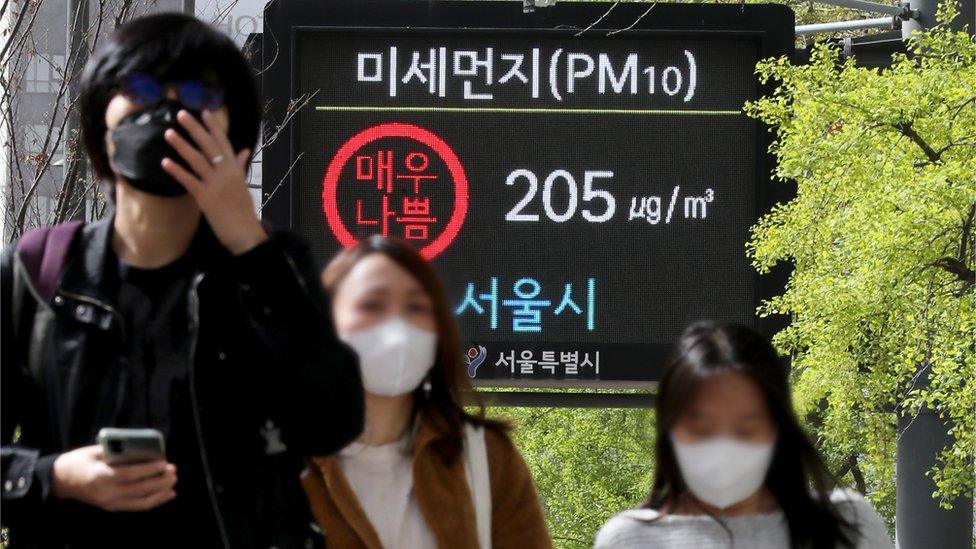
South Koreans have been advised to mask up as yellow dust blankets the country
In Seoul South Korea's capital, PM 10 levels were double the level at which government would start to consider it very bad for health.
In the city of Ulsan, southeast of the capital, it was even higher.
The health risk from PM 10 particles is immediate as they're invisible to see, and so in a polluted area it's difficult to prevent breathing them in.
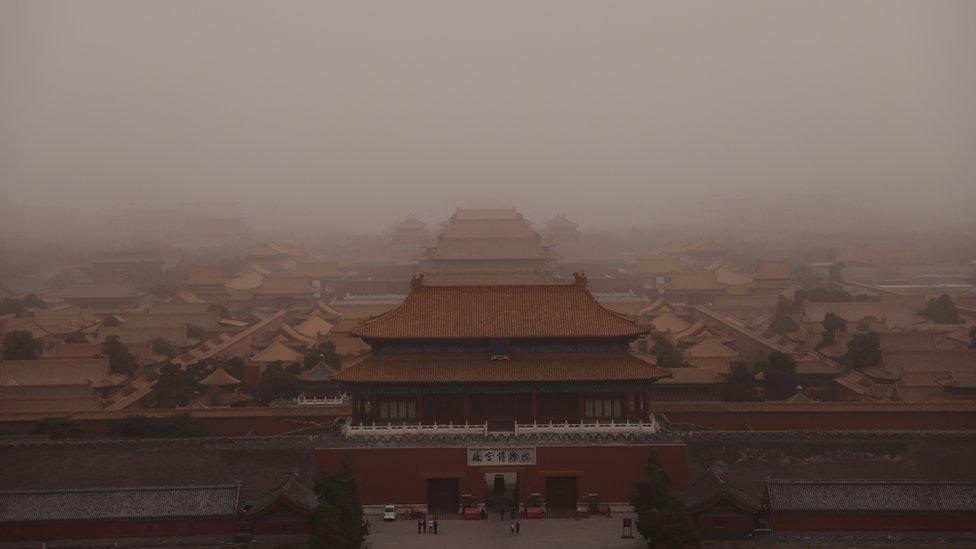
The expanse of Beijing's Forbidden City fades into a dust cloud in early April
People wear face masks and hooded jackets to try and reduce how much they inhale, and exercise is often avoided as this could cause people to breathe more deeply - and therefore breathe in more of the dust.
Eom Hyeojung, a 40-year-old teacher from Seoul, said there appears to be "no realistic way to avoid yellow dust".
She sends her daughter to school despite the health risks, saying: "As it happens so often, like every year, I just let her go. It's sad, but I think it became just a part of our life."
Others have said that as the sky appears to be getting murkier by the day, they have been avoiding going out as much as possible.
- Published16 March 2021
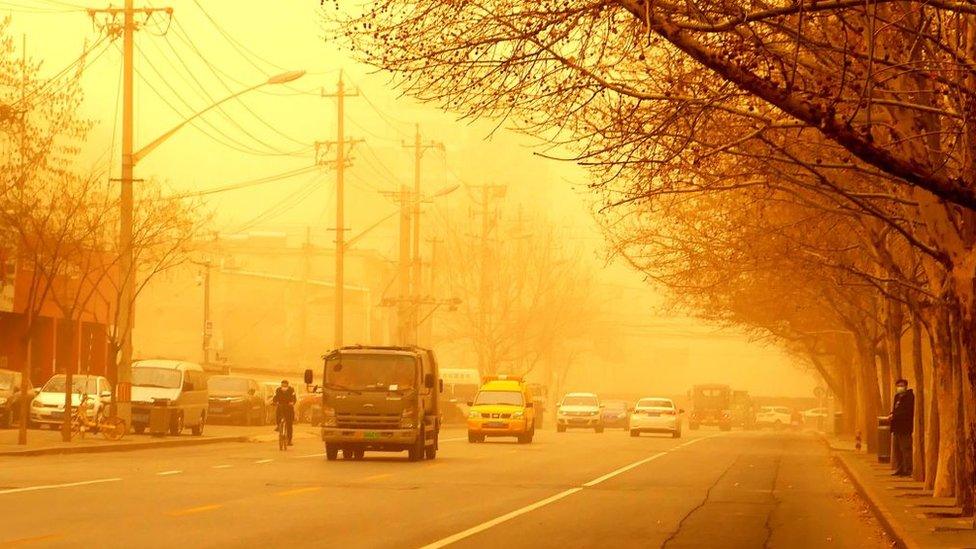
- Published16 March 2022
- Published25 May 2022
- Published27 July 2021
